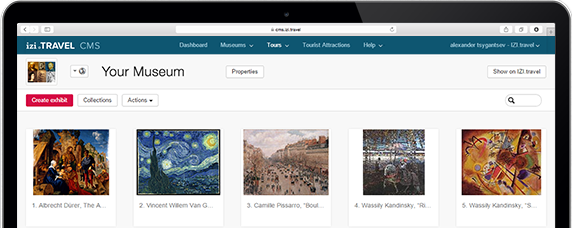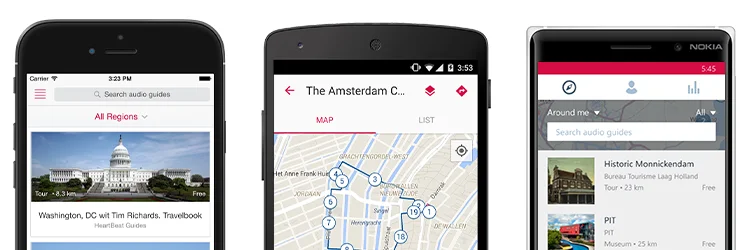Tour audio Industrial Calvene
2 sights
- Aperçu de l'audioguide
-
Aperçu de l'audioguide
Update Required To play the media you will need to either update your browser to a recent version or update your Flash plugin.This digital audio guide dedicated to a thematic tour of the Calvene area is provided by the Municipality of Calvene.
The digital brochure is also available which can be browsed online by clicking on the link: INDUSTRIAL CALVENE.
Calvene: the oxymoron of a modern non-industrialized town.
Throughout the 19th and 20th centuries, Calvene remained a town tenaciously attached to an agricultural and forestry-pastoral economy; the population worked in the cultivation of vines and olive trees, in the breeding of goats, sheep and cattle, in the logging and in the coal production.
The valley floor, where the Bordogni, Rossi, Colesello, Valsavina and Costa hamlets are located, is the most fertile part of the territory, where, a century ago, about 240 farms were registered.
Now, except for a few cases, agricultural and agro-pastoral activities are no longer the main source of subsistence.
Even the dairy business has been gradually abandoned, whereas, until the middle of the last century, the milk was processed in the San Bovo creamery and in the Malleo and San Bellino dairies.
In the Middle Ages, Calvene was well known for wool processing.
In addition to this activity, the inhabitants of Calvene were engaged in the traditional artisanship, first of all the production of weaves and straw hats - locally known as the art of the “dressa” - and in the raising of silkworms. Today, these activities are no longer practiced, but, probably, it is by virtue of this vocation, that the only long-operating industry in Calvene was the textile manufacture.
In fact, the inhabitants of Calvene opposed the process of industrialization in their territory, by refusing, in the last century, the establishment of industries along the banks of the Astico River: the Cotonificio Rossi was then planted in Caltrano, and the Nodari paper factory (later Burgo and today Mosaico) found its headquarters in Lugo di Vicenza.
Therefore, it is an oxymoron for a town which, at the dawn of the 19th century, was a lively and modern mountain community, endowed with an atavistic ability to manage and exploit its water and natural resources, enlightened to the point of building important logistic infrastructures, able to produce and distribute electricity to its hamlets, even before other more important cities.
It is therefore no coincidence that this circuit for discovering the pre-industrial archaeological artefacts of Calvene focuses on two territorial resources - the water and the stone - and on an avant-garde engineering work: the bridge over the Astico River.
- 1 Piazza Resistenza
- 2 Mill of the Brazzale family, better known as Molino de Pierela.
- 3 Teodolinda's mill
- 4 Old bridge over the Chiavona
- 5 Hydroelectric plant of the Bernardino Nodari paper factory
- 6 Drinking trough in the locality Maglio
- 7 Ruins of the washhouse near the Astico
- 8 Bridge over the Astico
- 9 Rossi hydroelectric plant
- 10 Washouse in the hamlet of Magan
- 11 Former Casa del Fascio and former E.T.I. knitwear factory
- 12 Fountain "Brighella"
-
Aperçu de l'audioguide
Update Required To play the media you will need to either update your browser to a recent version or update your Flash plugin.This digital audio guide dedicated to a thematic tour of the Calvene area is provided by the Municipality of Calvene.
The digital brochure is also available which can be browsed online by clicking on the link: INDUSTRIAL CALVENE.
Calvene: the oxymoron of a modern non-industrialized town.
Throughout the 19th and 20th centuries, Calvene remained a town tenaciously attached to an agricultural and forestry-pastoral economy; the population worked in the cultivation of vines and olive trees, in the breeding of goats, sheep and cattle, in the logging and in the coal production.
The valley floor, where the Bordogni, Rossi, Colesello, Valsavina and Costa hamlets are located, is the most fertile part of the territory, where, a century ago, about 240 farms were registered.
Now, except for a few cases, agricultural and agro-pastoral activities are no longer the main source of subsistence.
Even the dairy business has been gradually abandoned, whereas, until the middle of the last century, the milk was processed in the San Bovo creamery and in the Malleo and San Bellino dairies.
In the Middle Ages, Calvene was well known for wool processing.
In addition to this activity, the inhabitants of Calvene were engaged in the traditional artisanship, first of all the production of weaves and straw hats - locally known as the art of the “dressa” - and in the raising of silkworms. Today, these activities are no longer practiced, but, probably, it is by virtue of this vocation, that the only long-operating industry in Calvene was the textile manufacture.
In fact, the inhabitants of Calvene opposed the process of industrialization in their territory, by refusing, in the last century, the establishment of industries along the banks of the Astico River: the Cotonificio Rossi was then planted in Caltrano, and the Nodari paper factory (later Burgo and today Mosaico) found its headquarters in Lugo di Vicenza.
Therefore, it is an oxymoron for a town which, at the dawn of the 19th century, was a lively and modern mountain community, endowed with an atavistic ability to manage and exploit its water and natural resources, enlightened to the point of building important logistic infrastructures, able to produce and distribute electricity to its hamlets, even before other more important cities.
It is therefore no coincidence that this circuit for discovering the pre-industrial archaeological artefacts of Calvene focuses on two territorial resources - the water and the stone - and on an avant-garde engineering work: the bridge over the Astico River.
Commentaires
Téléchargez l'appli gratuite izi.TRAVEL
Créez vos propres visites audio!
L'utilisation du système et de l'appli de guide mobile est totalement gratuite

